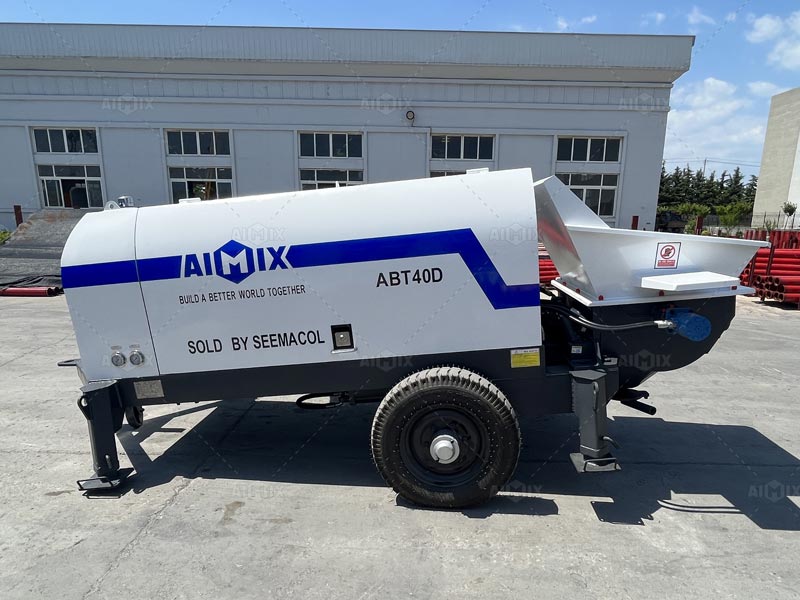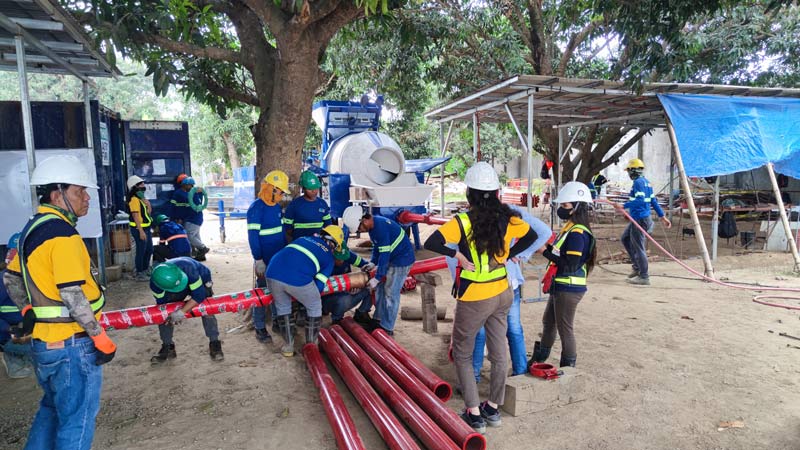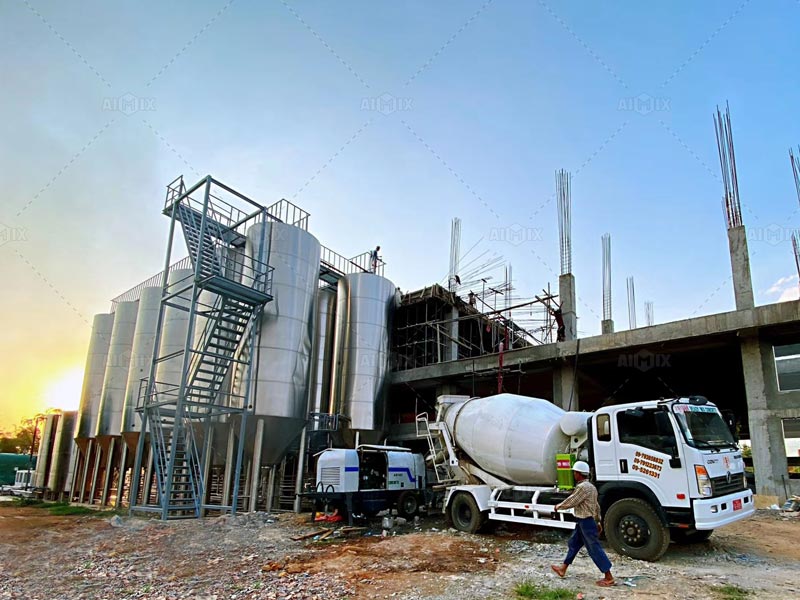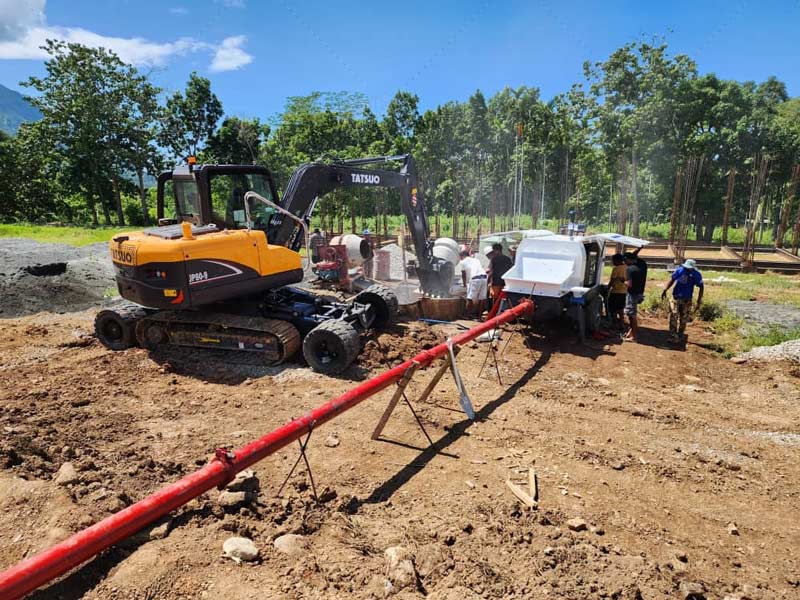Energy Consumption Analysis And Environmental Compliance Costs For Concrete Pumps In Colombia
As demand for efficient building solutions rises, contractors are increasingly turning to modern machinery like the concrete pump. However, while productivity is a top priority, two key factors—energy consumption and environmental compliance costs—play a crucial role in determining the long-term value of using a concrete pump Colombia(bomba de concreto Colombia). Understanding how these factors interact can help contractors make informed investment decisions that balance operational efficiency with sustainability.

Energy Consumption In Concrete Pumps
Concrete pumps, including the concrete trailer pump, are essential for moving large volumes of concrete over long distances or to elevated structures. Yet, energy consumption varies greatly depending on pump type, project requirements, and maintenance practices.
Factors Influencing Energy Use
Several elements impact how much energy a pump consumes:
- Hydraulic system design: Pumps with advanced hydraulic systems require less energy to maintain consistent pressure.
- Concrete mix properties: Thicker or more abrasive concrete mixes demand more power, leading to higher fuel or electricity use.
- Pumping distance and height: Transporting concrete over long horizontal stretches or to high-rise buildings increases resistance, requiring greater energy output.
- Operator practices: Skilled operators can adjust flow rates and reduce energy waste, while improper handling can result in unnecessary consumption.
Comparing Pump Types
A concrete trailer pump(bomba estatica hormigon) often consumes less energy than larger truck-mounted pumps due to its smaller size and simpler configuration. However, in projects requiring heavy-duty pumping, higher-capacity pumps with optimized energy systems may deliver better overall efficiency despite higher hourly fuel consumption.
Environmental Compliance Costs In Colombia
Colombia has been tightening its environmental regulations in recent years, particularly around emissions, fuel usage, and noise control in construction equipment. These regulations directly affect the operational costs of using concrete pumps.
Emission Standards
Diesel-powered pumps are common in Colombia, but they must comply with emission standards to reduce air pollution. Contractors operating non-compliant pumps may face penalties or additional costs for retrofitting emission control systems. Choosing modern concrete pump Colombia models that meet international emission standards can minimize compliance risks and associated expenses.
Noise And Site Regulations
Urban projects in Bogotá, Medellín, and Cali often face stricter noise regulations compared to rural construction sites. Pumps with quieter engines or soundproofing technology may carry a higher purchase price, but they help contractors avoid fines and delays in noise-sensitive areas.
Waste Management And Efficiency
Some environmental regulations focus on minimizing material waste. Pumps that reduce spillage and ensure precise placement contribute not only to energy efficiency but also to compliance with environmental standards. Investing in efficient pumps may lower long-term compliance costs by reducing waste disposal requirements.
Balancing Energy Costs With Compliance Investments
While energy consumption and compliance costs can increase operational expenses, smart equipment choices and practices can balance these costs and deliver long-term benefits.
Lifecycle Cost Analysis
Contractors should evaluate pumps not only based on purchase price but also considering energy usage, fuel costs, maintenance, and regulatory compliance throughout the pump’s lifespan. A high-quality concrete pump(bomba de hormigón) may cost more initially but can deliver savings over time by lowering fuel consumption and minimizing regulatory expenses.
Operator Training
Well-trained operators can reduce both energy use and environmental impact. Proper handling of a concrete trailer pump ensures consistent flow rates, avoids unnecessary strain on the pump, and helps maintain compliance with emission and noise standards. Training investments can quickly pay off through reduced operating costs.
Renewable Energy And Hybrid Solutions
Although less common in Colombia, hybrid or electric-powered pumps are beginning to emerge in the global market. For contractors seeking long-term sustainability, these options may become viable alternatives that significantly reduce compliance costs and improve environmental performance.
Practical Considerations For Contractors
When deciding on pump investments in Colombia, contractors should ask:
- Does the concrete pump Colombia model comply with local emission and noise standards?
- How does the pump’s energy consumption align with the scale of projects being handled?
- Can the concrete trailer pump balance mobility with energy efficiency in smaller projects?
- What are the long-term compliance costs compared to initial purchase savings?
These questions help contractors ensure that their investment supports both operational efficiency and environmental responsibility.

Conclusion
Energy consumption and environmental compliance are increasingly important considerations in Colombia’s growing construction industry. While the concrete pump offers undeniable benefits in efficiency and productivity, its long-term value depends on balancing fuel usage with compliance costs. Whether choosing a high-capacity pump for large-scale infrastructure or a concrete trailer pump for smaller, flexible projects, contractors in Colombia must consider not just the upfront investment but also the lifecycle costs shaped by energy efficiency and environmental regulations. By doing so, they can achieve sustainable growth while meeting both project goals and regulatory requirements.
Subscribe to unlock premium content
Sed at tellus, pharetra lacus, aenean risus non nisl ultricies commodo diam aliquet arcu enim eu leo porttitor habitasse adipiscing porttitor varius ultricies facilisis viverra lacus neque.



